2021 年广东暨南大学翻译硕士英语考研真题
学科、专业名称:翻译硕士专业
研 究 方 向: 英语笔译
考试科目名称: 翻译硕士英语
考试科目代码:211
考生注意:所有答案必须写在答题纸(卷)上,写在本试题上一律不给分。
I. Vocabulary & Grammar (30%)
Directions: There are 30 sentences in this section. Beneath each sentence there
are four words or phrases marked A, B, C and D. Choose ONE answer that
best completes the sentence. Write your answers on the Answer Sheet.
1. This problem should be discussed first, for it takes ________ over all the other
issues.
A.
precedence
umption
B.
prosperity
C.
pres
D.
probability
2. When you prepare for your speech, be sure to cite ________ qualified sources of
information and examples.
A.
manipulated
B.
unbiased
C.
distorted
D.
conveyed
3. Turning cultivated land back into forests or pasture is a fundamental way to stem
soil ________ and desertification in the long run.
A.
erosion
B.
depletion
C.
violation
D.
delusion
4. In that country, a person who marries before legal age must have a parent’
s
________
to obtain a license.
A.
sanction
B.
warrant
C.
malignance
D.
affirmation
5. The discrepancy in the company accounts is so ________
that no auditor could
have failed to notice it.
A.
spontaneous
B.
conspicuous
C.
notorious
D.
superfluous
�
6. Furthermore, if I were to leave him, he would ________, for he cannot endure to
be separated from me for more than one hour.
A. prevail
B. preside
C.
perish
D. persecute
7. Childhood can be a time of great insecurity and loneliness, during which the need
to be accepted by peers ________ great significance.
A. takes on
B. works out
C. brings about
D. gives in
8. The book might well have ________ had it been less expensive.
A. worked out
D. fitted in
B. gone through
C. caught on
9. I’ll have to ________ this dress a bit before the wedding next week.
A. let off
B. let go
C.
let
loose
D. let out
10. The integration of staff for training has led to a good exchange of ideas, greater
enthusiasm, and higher staff ________.
A. moral
B. mortal
C. morale
D. mores
11. Artificial intelligence deals partly with the ________ between the computer and
the human brain.
A. profile
B. mighty
C. analogy
D. leakage
12. These natural resources will be ________ sooner or later if the present rate
of exploitation continues.
A. depleted
B. deployed
C. inclined
D. mingled
13. It is not ______much the language as the background that makes the book difficult
to understand. A. that
B. as
C.
so
D. very
14. Human choice, not the intrinsic content of science, determines the outcome and
scientists, as human beings, therefore have a special responsibility to provide
council rooted in ________.
�
A. expiration
B. explanation
C. expertise
D. expenditure
15. Stocks are not goods – they merely are ________, exchanging current cash flows
from future ones.
A. conducts
B. conduction
C. conduits
D. products
16. A product is to be regarded as being ________ when introduced into another country
at less than its normal value.
A. discharged
B. discarded
C. disposed
D. dumped
17. The government decided to take a ________ action to strengthen the market
management.
A. diverse
B. durable
C. epidemic
D. drastic
18. Inflation will reach its highest in a decade across most of Asia this year,
threatening to ________ recent productivity gains.
A. reverse
B. reserve
C. retrieve
D. revise
19. The students seldom wash their own clothes; ________ they help their parents
do some housework.
A. rather than do
B. much less do
C. much more do
D. much less
20. In linking geographically disparate people, the Internet is arguably helping
millions of spontaneous communities to bloom: communities defined by common
interests rather than by the accident of ________.
A. affluence
B. reciprocity
C. contemporariness
D. proximity
21. Mr. Brown’s condition looks very serious and it is doubtful if he will ________.
A. pull back
B. pull through
C. pull
up
D. pull out
22. Probably no man had more effect on the daily lives of most people in the United
States ________ Henry Ford, a pioneer in automobile production.
A. as was
B. than was
C. than did
D. as did
23. A ________ negative attitude of the engineers toward projects funded by his
company is the cause of the delay of signing the contract.
A. perpetual
B. pernicious
C. preventive
D. pervasive
�
24. ________, domesticated grapes grow in clusters, range in color from pale green
to black, and contain sugar in varying quantities.
A. Their botanical classification as berries
B. Although their botanical classification as berries
C. Because berries being their botanical classification
D. Classified botanically as berries
25.
Nothing is so uncertain as the fashion market where one style ________ over
another before being replaced.
A. dominates
B. manipulates
C. overwhelms
D. prevails
26. Some of the paintings formerly ________ the Italian Renaissance artist are now
thought to have been created by one of his students.
A. submitted to
B. adapted from
C. denied by
D. attributed to
27. It is absolutely essential that William ________ his study in spite of some
learning difficulties.
A. will continue
B. continued
C. continue
D. continues
28. People who suffer from ________, for example, tend to have difficulties gauging
facial cues, so their attention is less influenced by where somebody is looking.
A. autism
B. assertiveness
C. extroversion
D. sociability
29. We’re starting to realize that magicians have a lot of implicit knowledge about
how we perceive the world around us because they have to deceive us in terms of
controlling attention, exploiting the ________ we make when we do and don’t notice
a change in our environment.
A. imaginations
B. conceptions
C. perceptions
D. assumptions
30. The hospital denies there is any connection between the disciplinary action and
Dr. Reid’s ________ about health problems.
A. allegiance
B. alliance
C. allegations
D. alliteration
II. Reading Comprehension (40%)
Directions: This part consists of two sections. In Section A, there are four
passagesfollowedbyatotalof20multiple-choicequestions.InSection
�
B,thereisonepassagefollowedbyatotalof5short-answerquestions.
Read the passages and write your answers on the Answer Sheet.
Section A
Multiple-Choice Questions (30%)
Passage 1
Questions 31 to 35 are based on the following passage.
Three hundred years ago news travelled by word of mouth or 1etter, and circulated
in taverns and coffee houses in the form of pamphlets and newsletters. “The coffee
houses particularly are very roomy for a free conversation, and for reading at an
easier rate all manner of printed news,” noted one observer. Everything changed
in 1833 when the first mass-audience newspaper, TheNewYorkSun, pioneered the use
of advertising to reduce the cost of news, thus giving advertisers access to a wider
audience. The penny press, followed by radio and television, turned news from a
two-way conversation into a one-way broadcast, with a relatively small number of
firms controlling the media.
Now, the news industry is returning to something closer to the coffee house.
The internet is making news more participatory, social and diverse, reviving the
discursive characteristics of the era before the mass media. That will have profound
effects on society and politics. In much of the world, the mass media are flourishing.
Newspaper circulation rose globally by 6% between 2005 and 2009. But those global
figures mask a sharp decline in readership in rich countries.
Over the past decade, throughout the western world, people have been giving up
newspapers and TV news and keeping up with events in profoundly different ways. Most
strikingly, ordinary people are increasingly involved in compiling, sharing,
filtering, discussing and distributing news. Twitter lets people anywhere report
what they are seeing. Classified documents are published in their thousands online.
Mobile phone footage of Arab uprisings and American tornadoes is posted on
social-networking sites and shown on television newscasts. Social-networking sites
help people find, discuss and share news with their friends.
And it is not just readers who are challenging the media elite. Technology firms
�
including Google, Facebook and Twitter have become important conduits of news.
Celebrities and world leaders publish updates directly via social networks; many
countries now make raw data available through “open government” initiatives. The
internet lets people read newspapers or watch television channels from around the
world. The web has allowed new providers of news, from individual bloggers to sites,
to rise to prominence in a very short space of time. And it has made possible entirely
new approaches to journalism, such as that practiced by WikiLeaks, which provides
an anonymous way for whistleblowers to publish documents. The news agenda is no
longer controlled by a few press barons and state outlets.
In principle, every liberal should celebrate this. A more participatory and
social news environment, with a remarkable diversity and range of news sources, is
a good thing. The transformation of the news business is unstoppable, and attempts
to reverse it are doomed to failure. As producers of new journalism, individuals
can be scrupulous with facts and transparent with their sources. As consumers, they
can be general in their tastes and demanding in their standards. And although this
transformation does raise concerns, there is much to celebrate in the noisy, diverse,
vociferous, argumentative and stridently alive environment of the news business in
the ages of the
internet. The coffee house is back. Enjoy it.
31. According to the passage, what initiated the transformation of coffee-house
news to mass-media news?
A. The appearance of big mass media firms.
B. The emergence of advertising in newspapers.
C. The popularity of radio and television.
D. The increasing number of newspaper readers.
32. Which of the following statements best supports “Now, the news industry
is returning to something closer to the coffee house”?
A. Newspaper circulation rose globally by 6%between 2005 and 2009.
B. People in the Western world are giving up newspapers and TV news.
�
C. Classified documents are published in their thousands online.
D. More people are involved in finding, discussing and distributing news.
33. According to the passage, which is NOT a role played by information
technology?
A. Challenging the traditional media.
B. Planning the return to coffee-house news.
C. Providing people with access to classified files.
D. Giving ordinary people the chance to provide news.
34. In “The coffee house is back”, coffee house best symbolizes ________.
A. the changing characteristics of news audience
B. the more diversified means of news distribution
C. the participatory nature of news
D. the more varied sources of news
35. The author’s tone in the last paragraph towards new journalism is ________.
A. optimistic and cautious
B. supportive and skeptical
C. doubtful and reserved
D. ambiguous and cautious
Passage 2
Questions 36 to 40 are based on the following passage.
The Welsh language has always been the ultimate marker of Welsh identity, but
a generation ago it looked as if Welsh would go the way of Manx, once widely spoken
on the Isle of Man but now extinct. Government financing and central planning,
however, have helped reverse the decline of Welsh. Road signs and official public
documents are written in both Welsh and English, and schoolchildren are required
�
to learn both languages. Welsh is now one of the most successful of Europe’s regional
languages, spoken by more than a half-million of the country’s three million people.
The revival of the language, particularly among young people, is part of a
resurgence of national identity sweeping through this small, proud nation. Last
month Wales marked the second anniversary of the opening of the National Assembly,
the first parliament to be convened here since 1404. The idea behind devolution was
to restore the balance within the union of nations making up the United Kingdom.
With most of the people and wealth, England has always had bragging rights. The
partial transfer of legislative powers from Westminster, implemented by Tony Blair,
was designed to give the other members of the club – Scotland, Northern Ireland,
and Wales – a bigger say and to counter centrifugal forces that seemed to threaten
the very idea of the union.
The Welsh showed little enthusiasm for devolution. Whereas the Scots voted
overwhelmingly for a parliament, the vote for a Welsh assembly scraped through by
less than one percent on a turnout of less than 25 percent. Its powers were
proportionately limited. The Assembly can decide how money from Westminster or the
European Union is spent. It cannot, unlike its counterpart in Edinburgh, enact laws.
But now that it is here, the Welsh are growing to like their Assembly. Many people
would like it to have more powers. Its importance as figurehead will grow with the
opening in 2003, of a new debating chamber, one of many new buildings that are
transforming Cardiff from a decaying seaport into a Baltimore-style waterfront city.
Meanwhile a grant of nearly two million dollars from the European Union will tackle
poverty. Wales is one of the poorest regions in Western Europe – only Spain,
Portugal, and Greece have a lower standard of living.
Newspapers and magazines are filled with stories about great Welsh men and women,
boosting self-esteem. To familiar faces such as Dylan Thomas and Richard Burton have
been added new icons such as Catherine Zeta-Jones, the movie star, and Bryn Terfel,
the opera singer. Indigenous foods like salt marsh lamb are in vogue. And Wales now
boasts a national airline, Awyr Cymru. Cymru, which means “land of compatriots,”
�
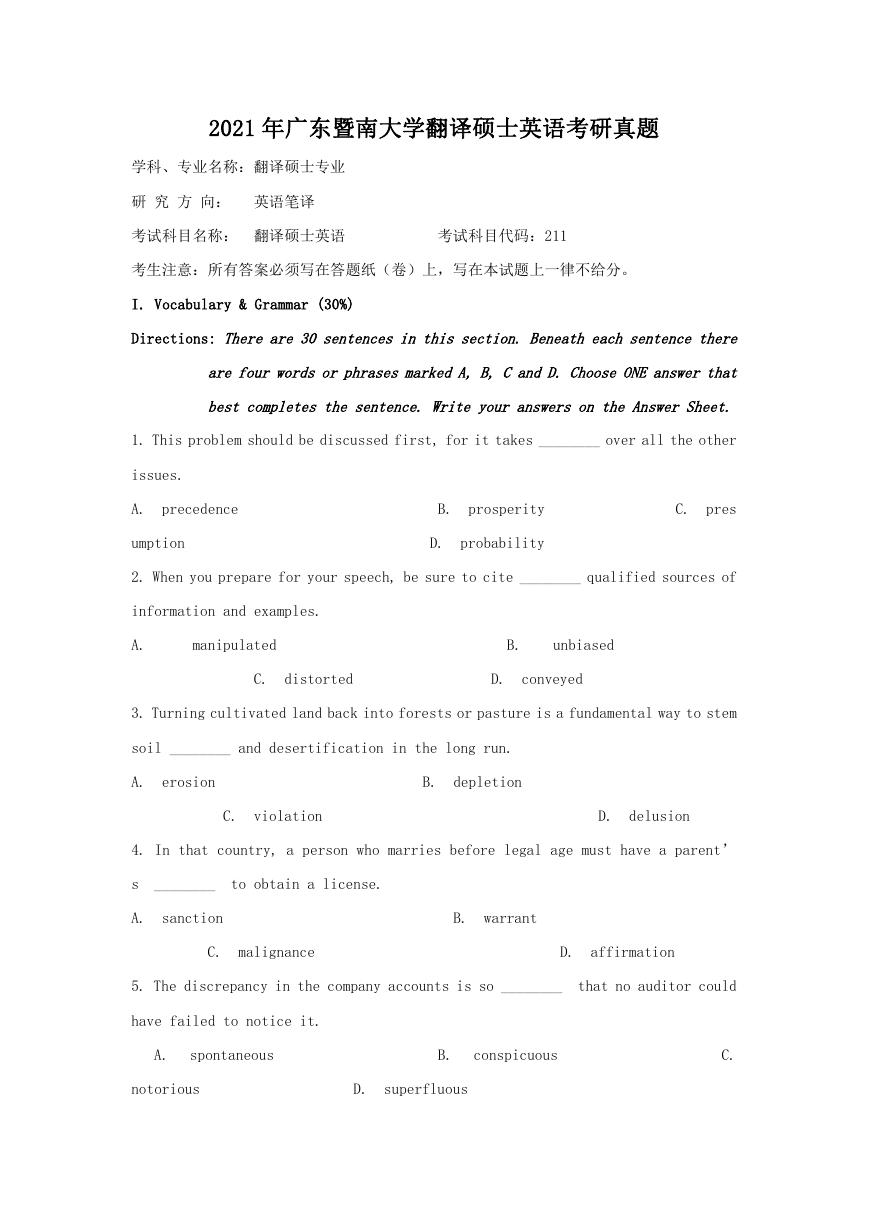
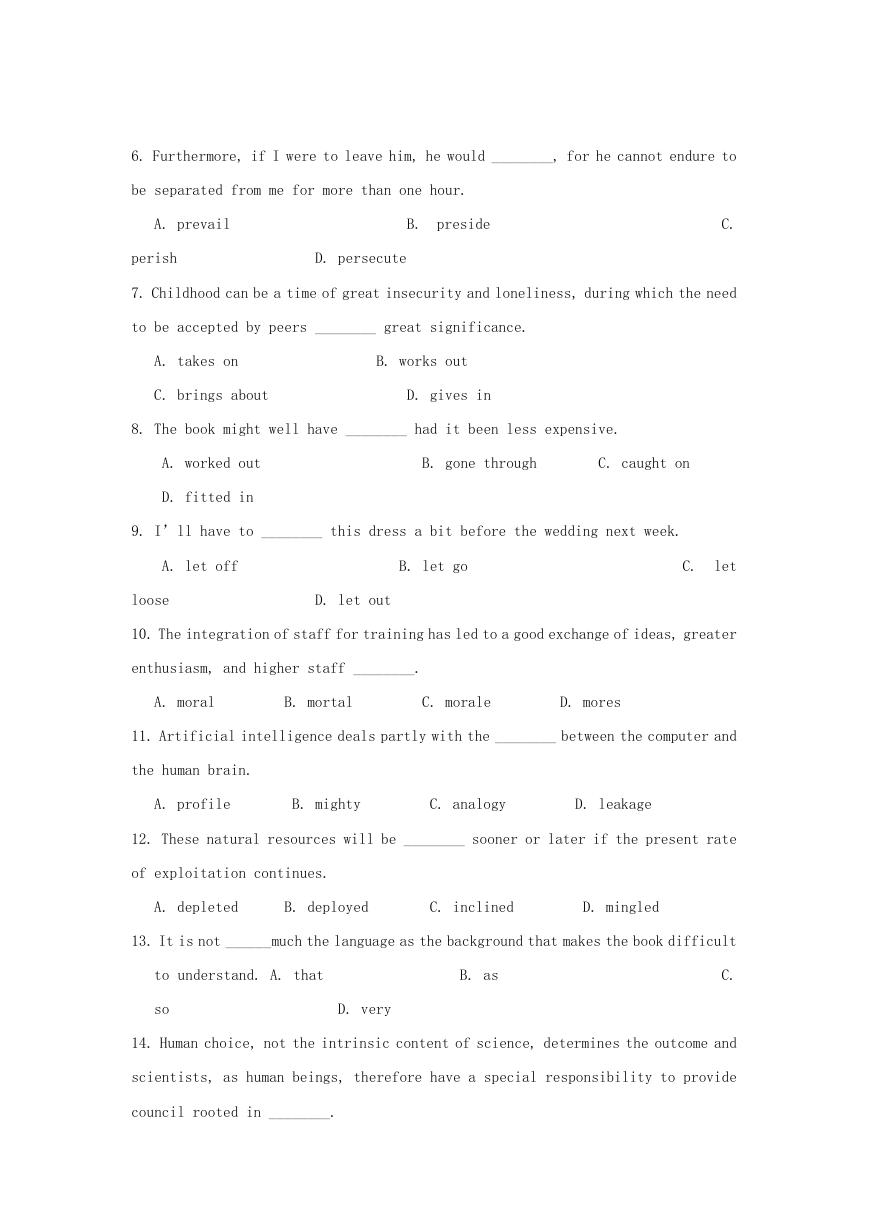
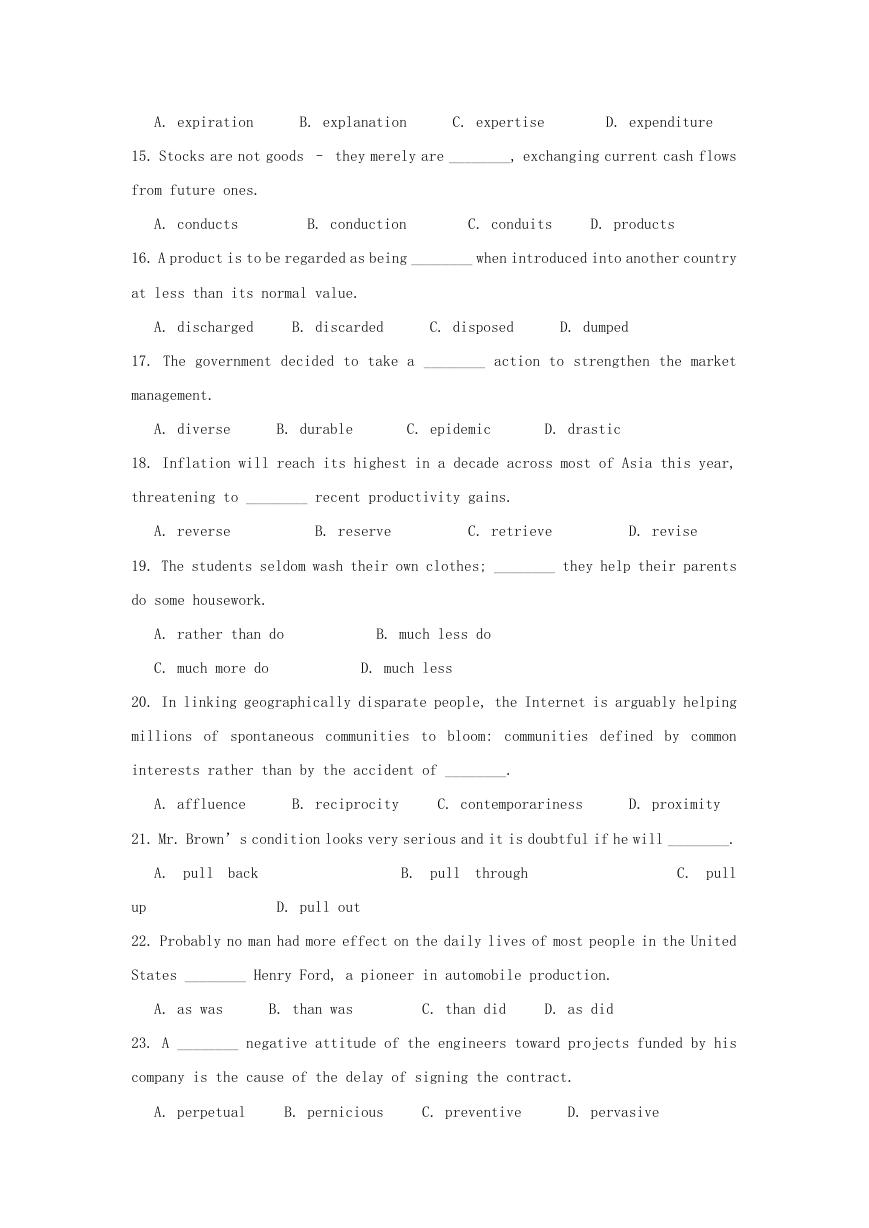
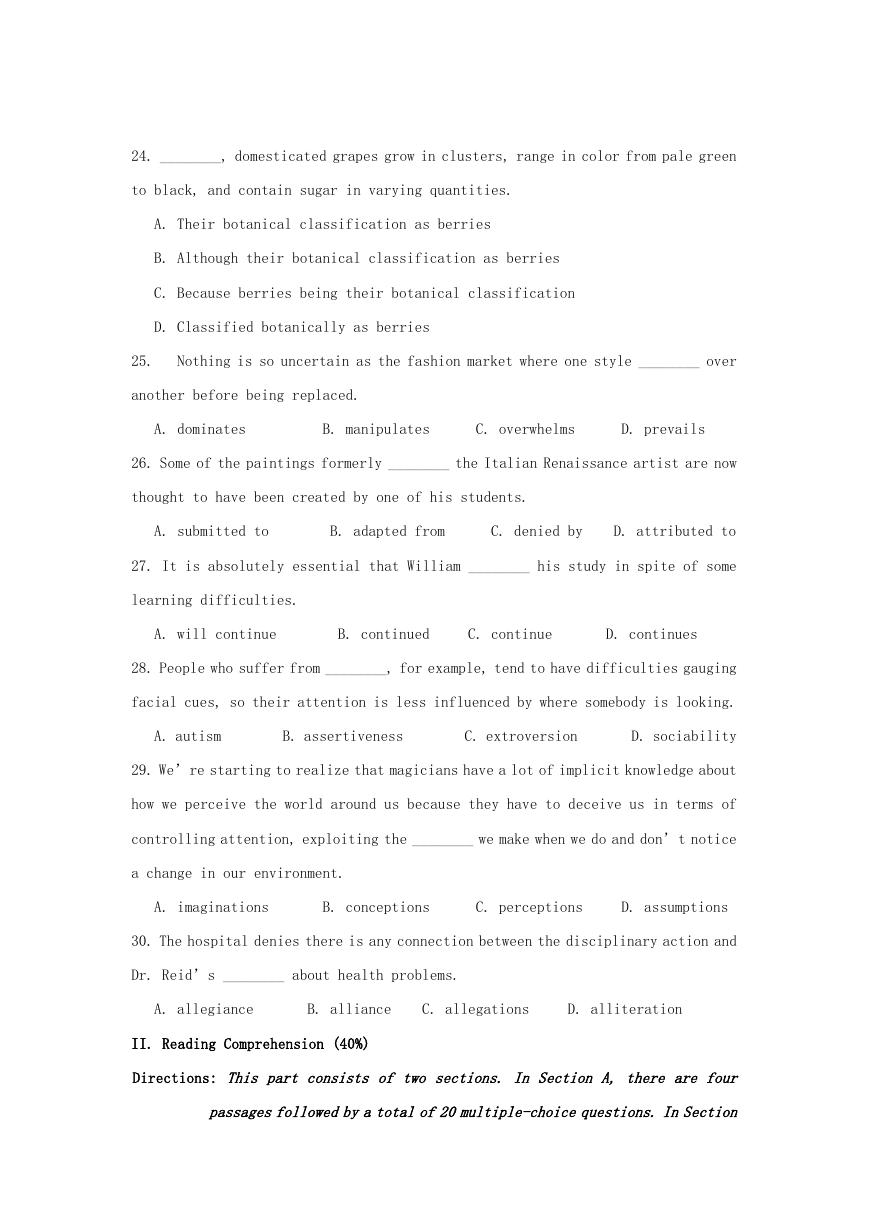
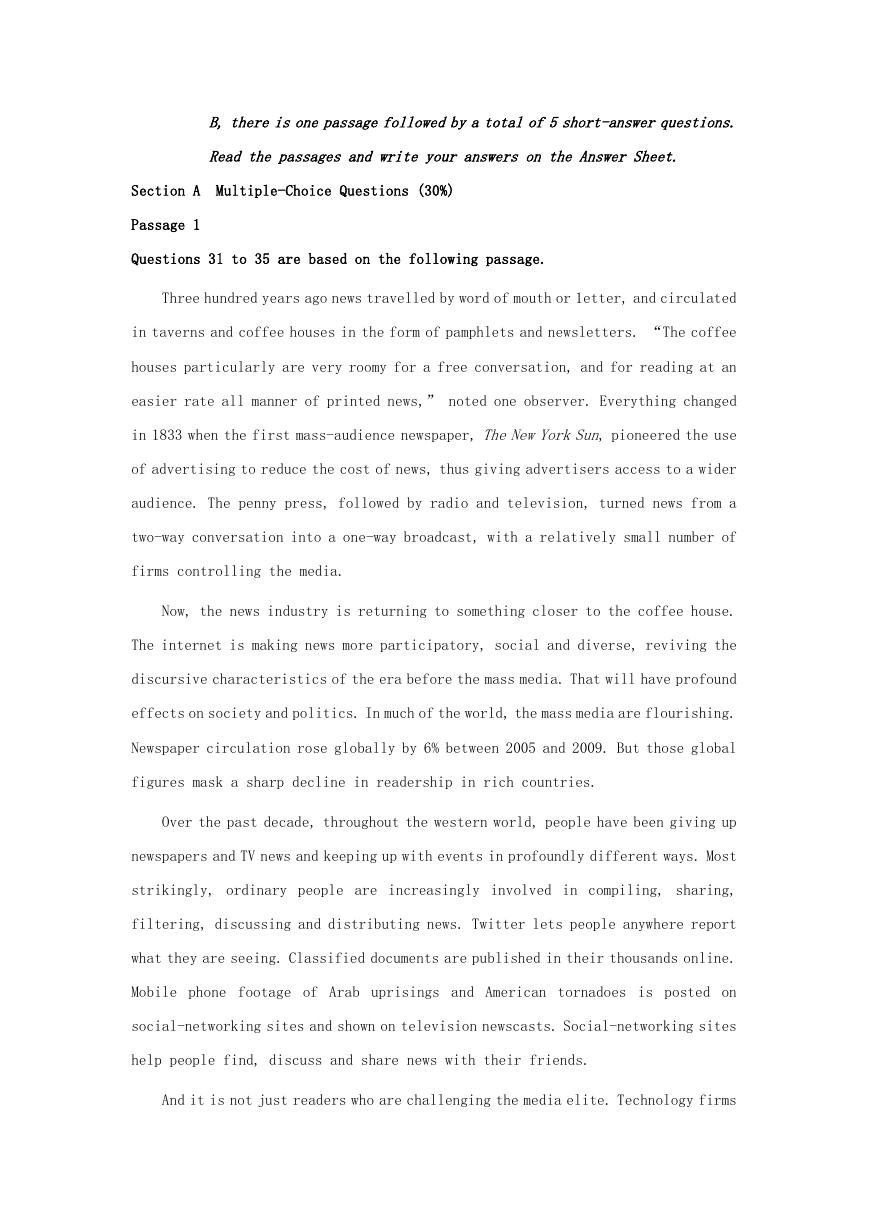
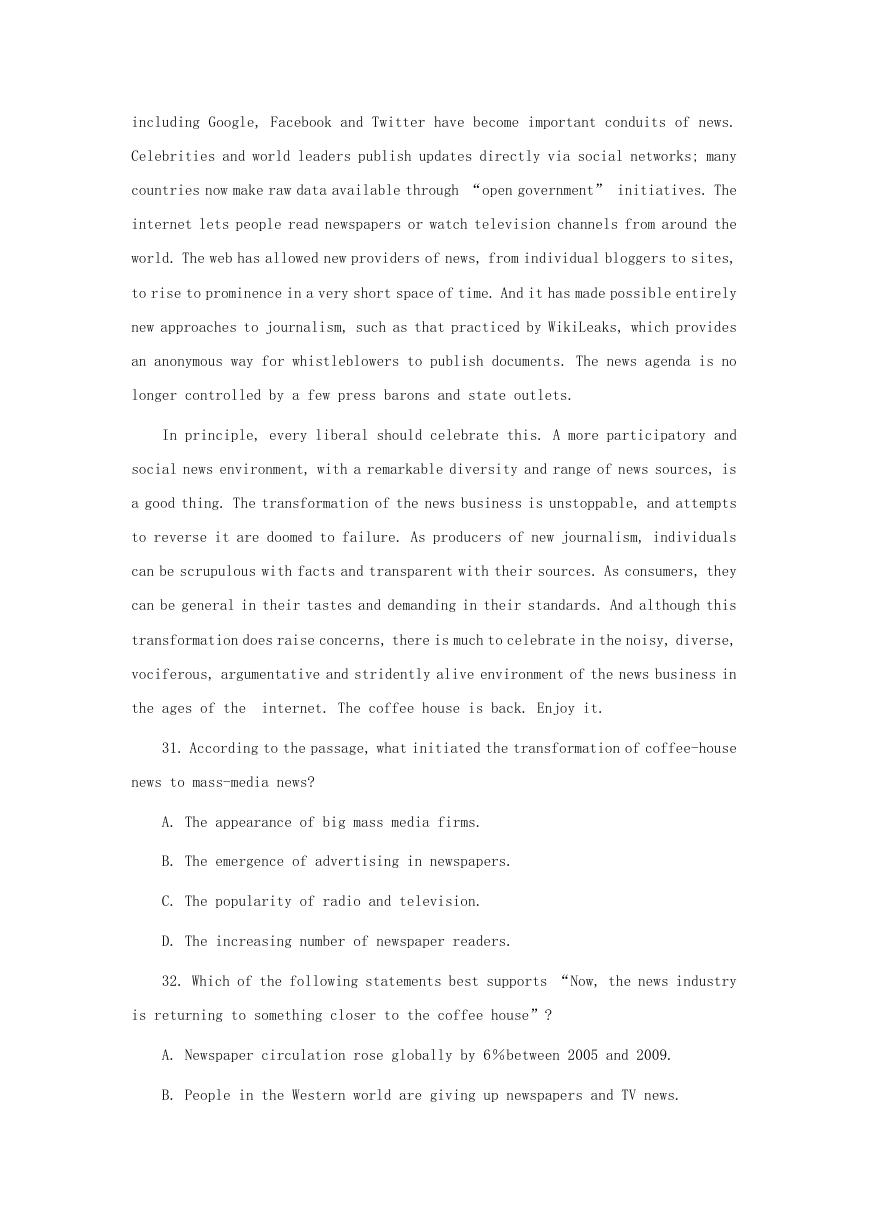
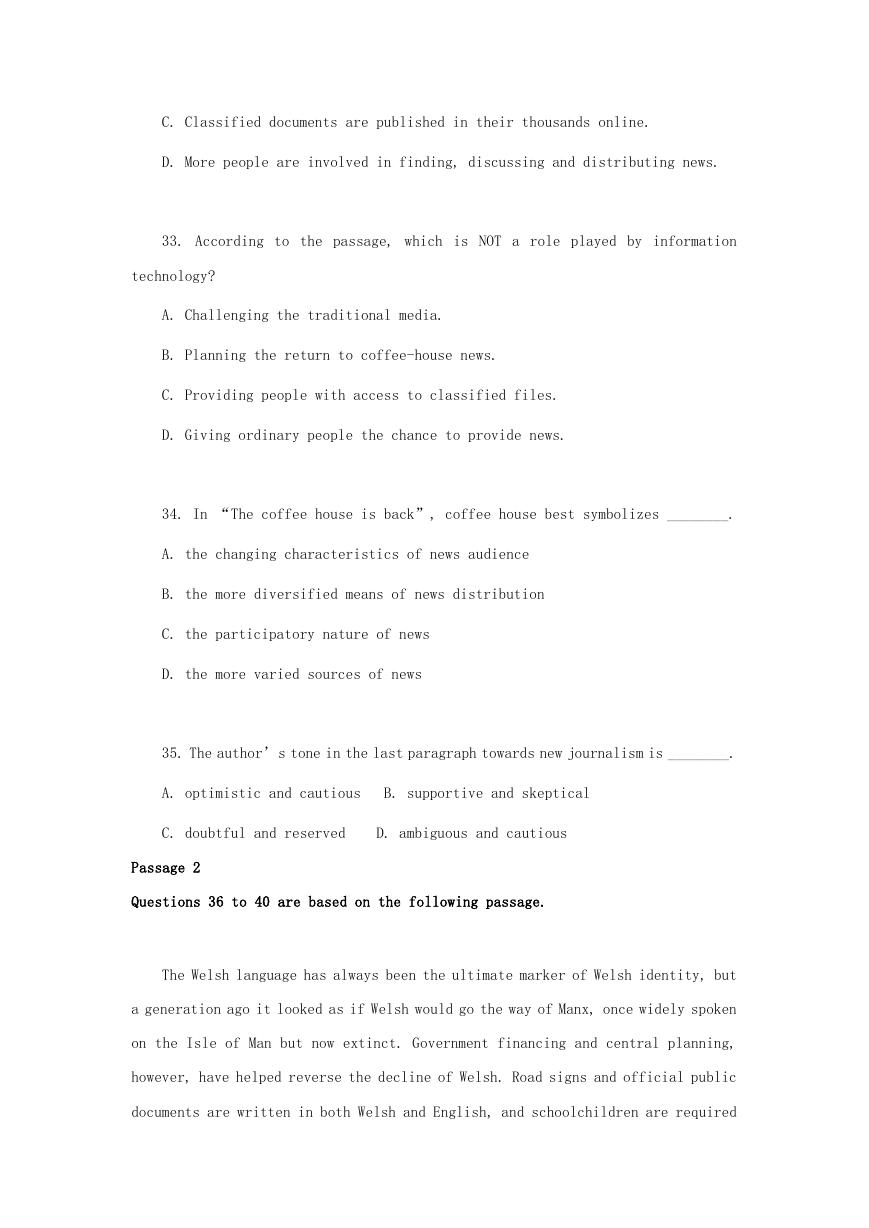
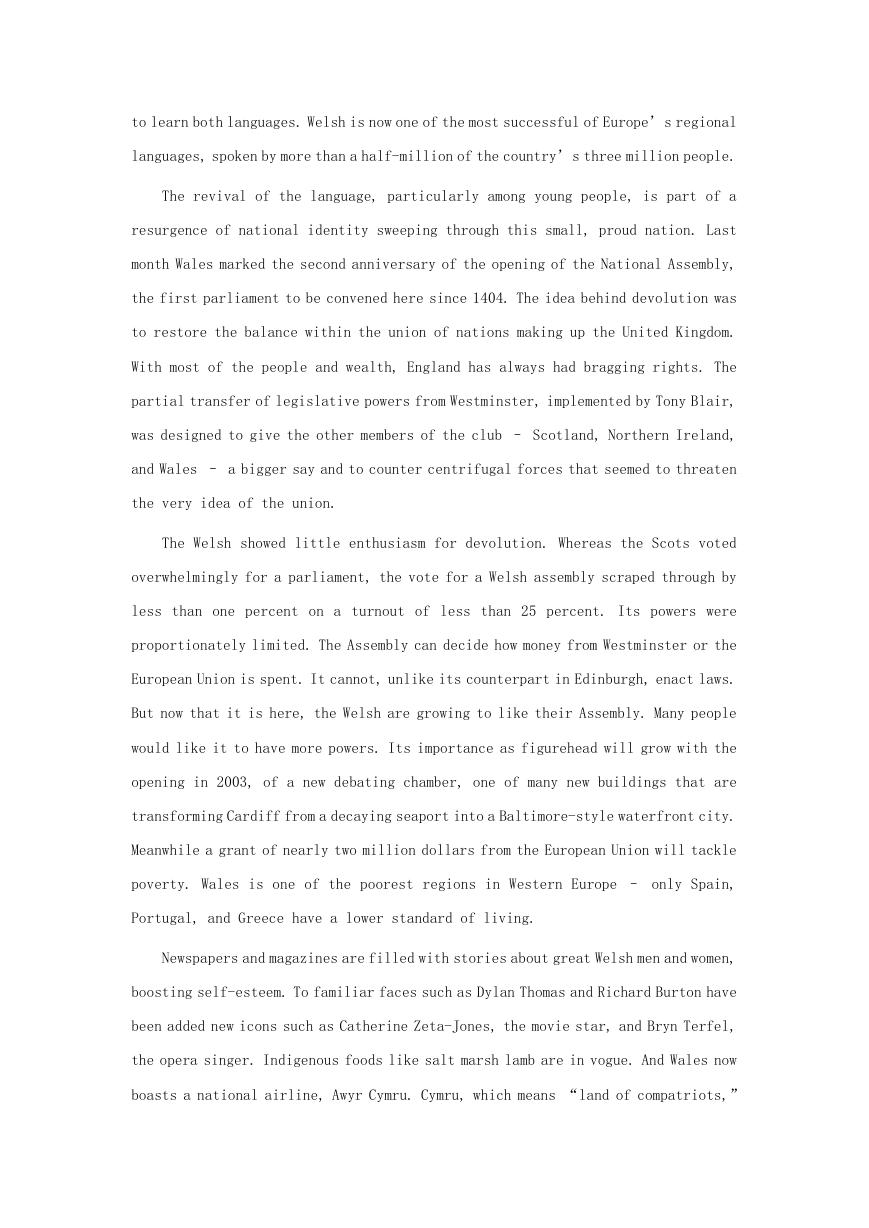








 2023年江西萍乡中考道德与法治真题及答案.doc
2023年江西萍乡中考道德与法治真题及答案.doc 2012年重庆南川中考生物真题及答案.doc
2012年重庆南川中考生物真题及答案.doc 2013年江西师范大学地理学综合及文艺理论基础考研真题.doc
2013年江西师范大学地理学综合及文艺理论基础考研真题.doc 2020年四川甘孜小升初语文真题及答案I卷.doc
2020年四川甘孜小升初语文真题及答案I卷.doc 2020年注册岩土工程师专业基础考试真题及答案.doc
2020年注册岩土工程师专业基础考试真题及答案.doc 2023-2024学年福建省厦门市九年级上学期数学月考试题及答案.doc
2023-2024学年福建省厦门市九年级上学期数学月考试题及答案.doc 2021-2022学年辽宁省沈阳市大东区九年级上学期语文期末试题及答案.doc
2021-2022学年辽宁省沈阳市大东区九年级上学期语文期末试题及答案.doc 2022-2023学年北京东城区初三第一学期物理期末试卷及答案.doc
2022-2023学年北京东城区初三第一学期物理期末试卷及答案.doc 2018上半年江西教师资格初中地理学科知识与教学能力真题及答案.doc
2018上半年江西教师资格初中地理学科知识与教学能力真题及答案.doc 2012年河北国家公务员申论考试真题及答案-省级.doc
2012年河北国家公务员申论考试真题及答案-省级.doc 2020-2021学年江苏省扬州市江都区邵樊片九年级上学期数学第一次质量检测试题及答案.doc
2020-2021学年江苏省扬州市江都区邵樊片九年级上学期数学第一次质量检测试题及答案.doc 2022下半年黑龙江教师资格证中学综合素质真题及答案.doc
2022下半年黑龙江教师资格证中学综合素质真题及答案.doc